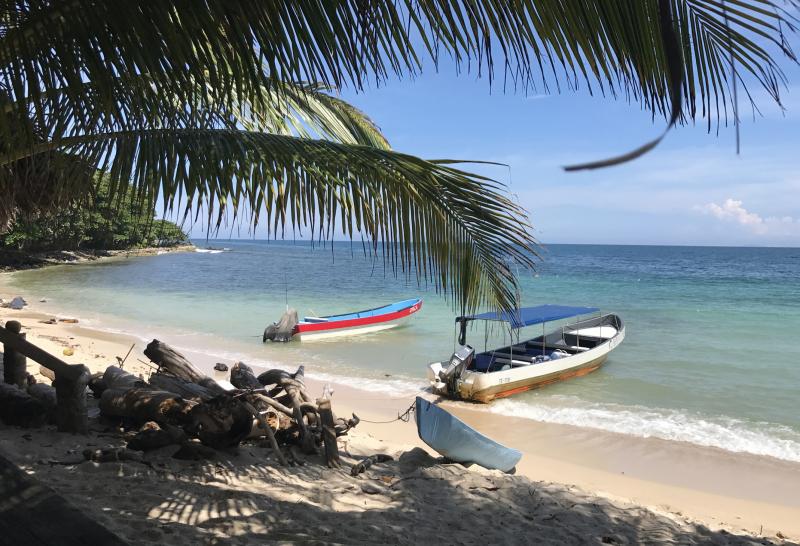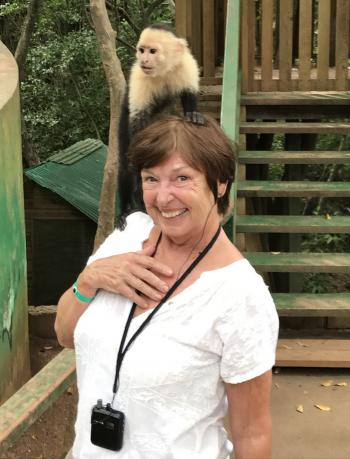Discovering the rainforest, reef and ruins of Honduras
This article appears on page 44 of the March 2018 issue.
As a dedicated Road Scholar (Boston, MA; 800/454-5768, www.roadscholar.org) traveler, I keep up with the company’s new travel opportunities. The “Honduras: Rainforest, Reef & Ruins” tour was a new one in 2017.
Admittedly, the country has a bad rep — primarily relating to violence resulting from the drug trade — but Honduras is a wonderful country that is worthy of adventure travelers who want value and a nontouristy destination.
I was on Road Scholar’s September 2017 tour, and I never felt unsafe nor threatened. In fact, my fellow travelers and I experienced just the opposite: a country of friendly people who were proud of their diverse heritage and were working to create a safe, ecological and educational travel experience.
There were six other women on this trip, and all of us were interested in something new and different in travel. My tour price of $2,494 included airfare from Los Angeles. As with most Road Scholar trips, hotels, day trips and most meals were included.
For extras (beer or other drinks, small tips and incidentals), I spent the equivalent of $100 during the eight days in the country. Quite a bargain in today’s travel market!
The sites
There were four destinations included on the 8-day itinerary: San Pedro Sula, where we originally landed, followed by Copán (Mayan ruins), Tela (to explore its “banana republic” heritage) and, finally, the island of Roatán, the entrance to the area’s famous coral reef, an expat community and a diver’s paradise. Each site was significantly different.
Wi-Fi access was included at all of our hotels, and electrical plugs were American style.
Our guide, Rodolfo (Fito) Alvarado, was there from the group’s landing to our final takeoff. He was, throughout, a fountain of knowledge on the Mayan culture and ruins, the rainforest and the history of Honduras and was an expert on the flora and fauna of his beloved country. He also made himself always available for our needs and questions.
If Mayan culture and history is your passion, the visit to Copán on this tour may add little if you have already visited other Mayan sites, but if it’s your first such visit, it is a manageable introduction.
The banana industry’s history in Tela was interesting, documented with photographs, a rail system and a museum. While bananas are still grown there, the palm-oil industry is taking over.
A highlight of our tour was the island of Roatán, where we stayed at the Turquoise Bay Dive & Beach Resort for three nights. Built on a hill overlooking the bay, the hotel featured rooms that were large and comfortable, with wonderful views. It is located at one end of the island, necessitating transportation to see other parts of the island. The food there was the best we had on our trip, as was the service.
A few highlights from our time there include snorkeling and visits to the Carambola Botanical Gardens, the Institute for Marine Sciences on Anthony’s Caye and Mayan Eden Eco Park.
On the mainland, the hacienda hotel Marina Copán was a wonderful choice, with lush gardens to stroll through and a pool to cool off in. Lunch at the restored Hacienda San Lucas, a century-old farmhouse, provided great food, spectacular views and a short hike to Los Sapos, a Mayan ceremonial site.
The highlight in Tela was a boat ride to the peninsula and Jeanette Kawas National Park for a rainforest walk and a beachside lunch of fish caught and cooked by the local inhabitants.
A few final points
We traveled during the rainy season (August to December) and were quite lucky, experiencing rain mostly at night, but that is not always the case. Fall is also hurricane season. February to June is generally the best time to visit.
While hotels on this trip were numerous and accommodating, highways were not always so. We traveled in a tour bus, and some main stretches of road were poorly maintained; encountering potholes was common.
But these downsides should not keep anyone interested from exploring this developing Central American country, which is full of beauty, history and friendly, inviting people.


-itok=StmWa_nF.jpg)
